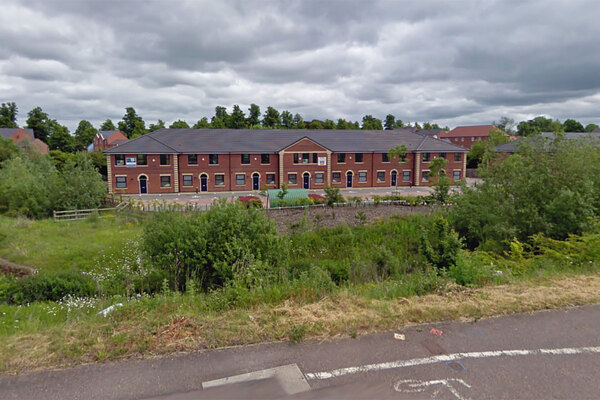
Donna McCarthy is a partner at Devonshires
Planning for the new tenant satisfaction measures must begin now
There is much to do between now and April, when social landlords must start gathering official tenant satisfaction measures data for the regulator. This planning stage must be used wisely, writes Donna McCarthy
The much-heralded tenant satisfaction measures (TSMs) have finally arrived (see box below) and offer registered providers (RPs) nowhere to hide when it comes to their performance.
While this sounds ominous, most landlords welcome these measures as a way to engage with their residents and be more transparent.
The 22 TSMs will monitor areas ranging from building safety, repairs and effective complaint-handling to tenant engagement and form part of a substantial overhaul of social housing regulation following the Grenfell Tower fire in 2017.
These reforms are fundamentally geared around tenants’ needs, after reports that residents in the tower were ignored when they raised serious concerns over the safety of the block.
The Social Housing White Paper, published in November 2020, set an expectation that the Regulator of Social Housing (RSH) would bring in a set of TSMs on issues that matter to tenants.
A consultation received 1,089 responses, including around 600 from social housing tenants. TSMs are also part of the wider direction of travel towards proactive consumer regulation, and should provide tenants with greater transparency about their landlord’s performance.
The rationale for implementing TSMs is threefold, namely to allow tenants to “scrutinise” their landlord’s performance; to give RPs an insight into their own performance; and to allow the RSH to check if RPs are complying with regulatory standards.
So, what does this mean for RPs? In a nutshell, it will require the collation and publication of a large amount of material relating to 22 TSMs.
It’s an annual school report, as it were, for RPs. Introducing and maintaining data collection for TSMs will require a large amount of work. Landlords will have to start collecting the required information from 1 April 2023 and will have to publish it by April 2024.
The first thing RPs should do is note that although the TSMs are in substantively the same form as set out in the TSM consultation earlier this year, some have been refined and clarified because of the feedback provided.
Final tenant satisfaction measures
Overall satisfaction
1. Overall satisfaction with the service provided by the landlord. Measured by: tenant perception survey
Keeping properties in good repair
2. Satisfaction with repairs. Measured by: tenant perception survey
3. Satisfaction with time taken to complete most recent repair. Measured by: tenant perception survey
4. Satisfaction that the home is well-maintained. Measured by: tenant perception survey
5. Homes that do not meet the Decent Homes Standard. Measured by: landlords’ management information
6. Repairs completed within target timescale. Measured by: landlords’ management information
Maintaining building safety
7. Satisfaction that the home is safe. Measured by: tenant perception survey
Safety checks
8. Gas safety checks. Measured by: landlords’ management information
9. Fire safety checks. Measured by: landlords’ management information
10. Asbestos safety checks. Measured by: landlords’ management information
11. Water safety checks. Measured by: landlords’ management information
12. Lift safety checks. Measured by: landlords’ management information
Respectful and helpful engagement
13. Satisfaction that the landlord listens to tenant views and acts upon them. Measured by: tenant perception survey
14. Satisfaction that the landlord keeps tenants informed about things that matter to them. Measured by: tenant perception survey
15. Agreement that the landlord treats tenants fairly and with respect. Measured by: tenant perception survey
Effective handling of complaints
16. Satisfaction with the landlord’s approach to handling of complaints. Measured by: tenant perception survey
17. Complaints relative to the size of the landlord. Measured by: landlords’ management information
18. Complaints responded to within Complaint Handling Code timescales. Measured by: landlords’ management information
Responsible neighbourhood management
19. Satisfaction that the landlord keeps communal areas clean and well-maintained. Measured by: tenant perception survey
20. Satisfaction that the landlord makes a positive contribution to neighbourhoods. Measured by: tenant perception survey
21. Satisfaction with the landlord’s approach to handling anti-social behaviour. Measured by: tenant perception survey
22. Anti-social behaviour cases relative to the size of the landlord. Measured by: landlords’ management information
The RSH concluded that this has improved the measures and will provide more transparency about landlord performance.
Of particular note, the standard relating to a home being well maintained and safe has been split into two individual TSMs and the proposed TSM relating to tenant knowledge of how to make a complaint has been removed completely.
Secondly, RPs need to act now and not in a few months’ time. It may seem like you have a lot of time until April next year, but I would urge RPs not to rest on their laurels, as there is a substantial amount of planning that needs to be done.
If you don’t use this planning stage wisely, you could end up in serious trouble. Once the information-collection stage kicks in, it is going to be difficult to change your processes.
Of fundamental importance is assessing whether your systems are robust enough to collect all the data that you need.
Ten of the TSMs will be gathered through management information, so for example how many of your homes do not meet the Decent Homes Standard and how many repairs were completed.
Twelve of the TSMs relate directly to customer satisfaction, so it will be necessary to work out how you decide which residents to approach and how you approach them.
How are you going to conduct your participation surveys and how are you going to engage with groups in sheltered or supported housing, or those who have protected characteristics, such as those with disabilities? All of these factors need careful consideration.
It is, of course, important to remember that all this data will need to be published, offering residents the chance to scrutinise their landlord more than ever before.
As a result, it is important that RPs get this right and start planning now, to ensure they have the correct systems in place and have enough time to capture the necessary information.
Donna McCarthy, partner, Devonshires
Sign up for our tenancy management newsletter
Already have an account? Click here to manage your newsletters













